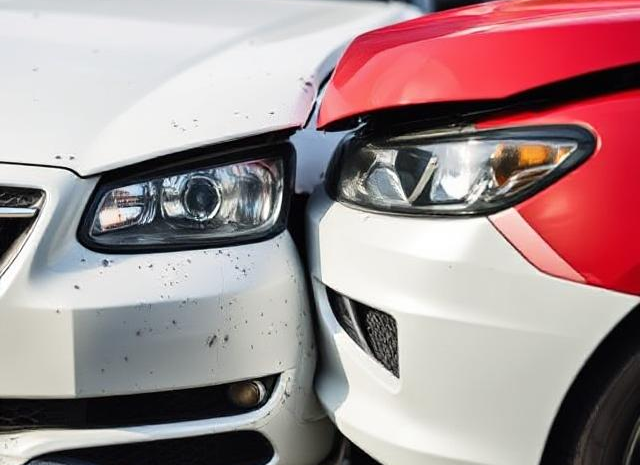
Comprehensive Vs. Collision Coverage: What’s The Difference?
Comprehensive and collision coverage are two important types of auto insurance that protect your vehicle, but they cover different types of damage. Understanding the difference between them is essential to selecting the right coverage for your needs. Here’s a breakdown of each:
1. Collision Coverage
Collision coverage pays for damage to your car resulting from a collision, regardless of who is at fault. This includes accidents with other vehicles, objects (like trees, fences, or guardrails), or even if you roll your vehicle.
What it covers:
- Accidents with other cars: If you’re in an accident with another vehicle and your car is damaged, collision coverage will cover the cost of repairs or the replacement of your car if it’s totaled.
- Single-vehicle accidents: If you hit an object (such as a tree, mailbox, or guardrail), collision coverage will pay for the damage.
- Rolling over: If you lose control and your car flips over, collision coverage will cover the repair costs.
What it doesn’t cover:
- Damage from non-collision events: Collision coverage doesn’t cover damage from things like theft, vandalism, or natural disasters.
- Liability: If you cause damage to someone else’s car or property, collision coverage will not pay for those costs. That’s where liability insurance comes in.
When is it useful?
- Required for financing or leasing: If you’re financing or leasing your car, your lender or leasing company will typically require you to have collision coverage.
- Valuable or new vehicles: If you have a newer or more expensive car, collision coverage can help ensure you’re not stuck with a hefty repair bill after an accident.
2. Comprehensive Coverage
Comprehensive coverage (sometimes called “other than collision” coverage) protects your vehicle from damage that occurs outside of a collision. It covers a wide range of events, including natural disasters, theft, vandalism, and more.
What it covers:
- Theft: If your car is stolen, comprehensive coverage will help cover the loss.
- Vandalism: If your car is damaged due to vandalism (such as broken windows or keying), comprehensive will cover the repairs.
- Natural disasters: This includes damage from weather-related events like hail, floods, earthquakes, or wildfires.
- Animal collisions: If you hit an animal (like a deer), comprehensive coverage will pay for the repairs.
- Falling objects: If your car is damaged by falling debris (e.g., a tree branch, or a rock), comprehensive coverage will handle the repairs.
What it doesn’t cover:
- Collision-related damage: Damage from accidents with other vehicles or objects is not covered under comprehensive coverage; that’s where collision coverage comes in.
- Liability: Similar to collision coverage, comprehensive will not cover damage to another person’s vehicle or property that you caused. That’s what liability insurance is for.
When is it useful?
- High-risk areas: If you live in an area prone to natural disasters (like flooding or hailstorms) or high vehicle theft rates, comprehensive coverage provides protection.
- Older vehicles: If your car is older or less valuable, you might consider skipping collision coverage and keeping only comprehensive if you’re concerned about non-collision damage.
3. Key Differences Between Comprehensive and Collision Coverage
| Aspect | Collision Coverage | Comprehensive Coverage |
|---|---|---|
| What it covers | Damage from collisions with other vehicles or objects. | Non-collision-related events like theft, vandalism, natural disasters, and animal collisions. |
| Example of events | Crashing into another car, hitting a tree or fence. | Theft, hailstorm damage, vandalism, hitting an animal. |
| Typical vehicles covered | Newer, financed, or leased cars. | Older cars or cars at risk of non-collision damage. |
| Requirement | Often required for leased or financed vehicles. | Optional, though recommended for additional peace of mind. |
| Who it benefits | Drivers who want protection against accidents, regardless of fault. | Drivers who want protection against a broader range of non-collision damage. |
4. Do You Need Both?
Many drivers choose to have both collision and comprehensive coverage to fully protect their vehicles. However, whether you need both depends on your situation:
- If you have a new or financed vehicle: You may need both types of coverage, as your lender or leaseholder may require collision coverage, and comprehensive will protect against other forms of damage.
- If your car is older: If your car is not worth much, you might decide to drop one or both types of coverage, especially if the cost of the premiums exceeds the value of the car. For example, many drivers with older cars only keep comprehensive coverage, which helps protect against risks like theft or vandalism but doesn’t include collision protection.
- Your driving environment: If you live in an area with frequent storms, wildlife, or high crime rates, comprehensive coverage could be essential, while collision coverage might be necessary if you tend to drive in high-traffic areas.
5. How to Choose Between Comprehensive and Collision Coverage
- Evaluate Your Vehicle’s Value: If your car is worth less than the cost of your annual premiums for both collision and comprehensive coverage, you might want to reconsider or reduce your coverage.
- Consider Your Risk Exposure: Think about where you live and your driving habits. If you often drive in areas with high animal populations or severe weather, comprehensive coverage can protect against those risks.
- Think About Peace of Mind: While collision and comprehensive are optional in many states, having both can give you peace of mind, knowing you’re covered for a wide range of possible situations.

